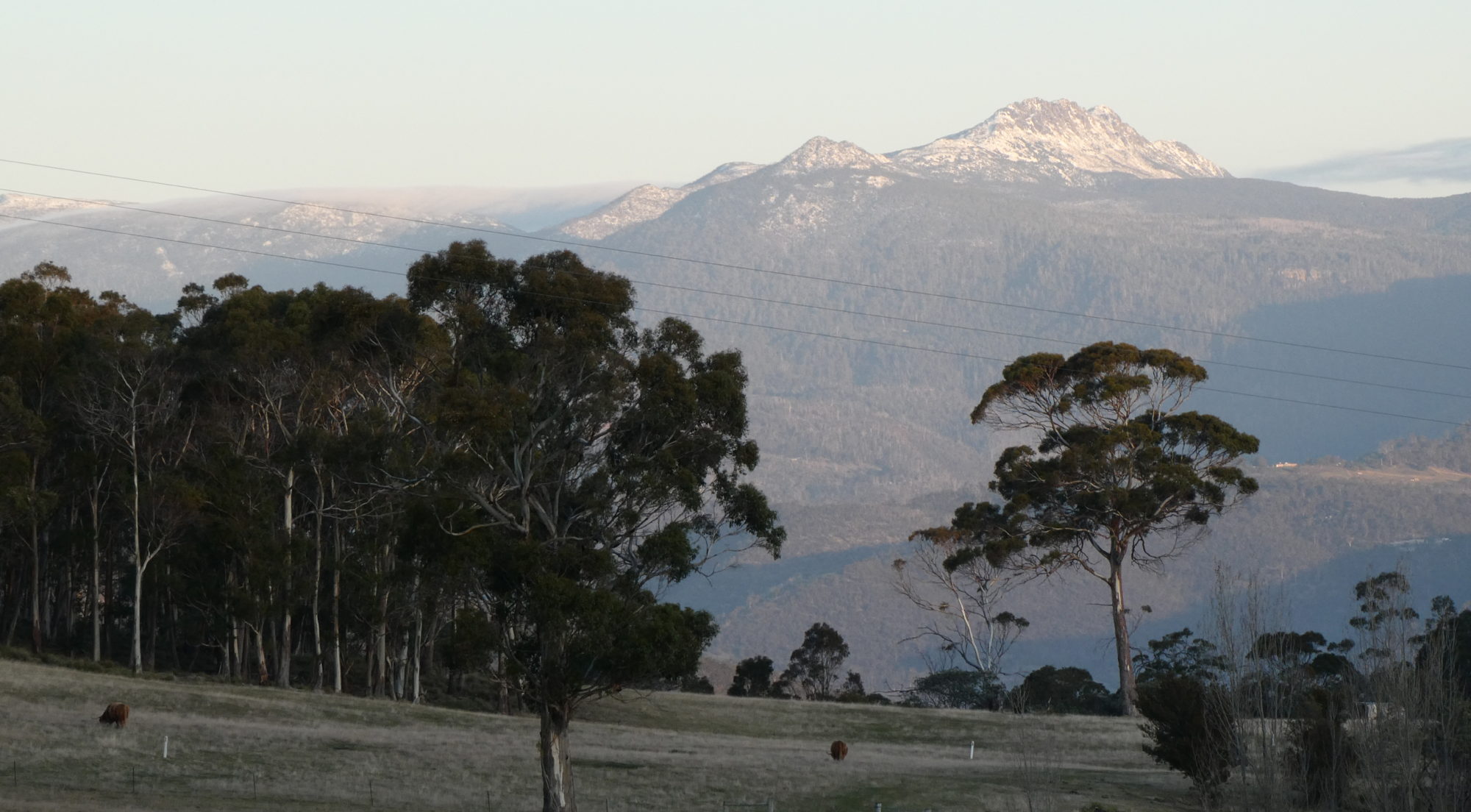The COVID-19 lock-down has given us a foretaste of the effect that proposed emissions reductions are likely to have on global atmospheric CO2 concentrations. The daily rate of production of CO2 by the global economy is shown here:

The fall in production rate was very sudden on a time scale of decades (left panel) and so is shown on an expanded, monthly, time scale (right panel). Production was at a minimum in April 2020 at around 90 percent of the unperturbed value.
Was this 10 percent fall in production rate visible in the observations of atmospheric CO2 concentrations?
The raw concentration figures show are large steady increase and so they don’t tell us much, but the differences from month to month are more revealing. Month to month differences measured at the Cape Grim Observatory in Tasmania and at the Mauna Loa Observatory in Hawaii are shown in grey in the top two panels here.

The dotted lines are the two-sigma confidence limits for these monthly differences.
No significant changes in monthly concentration differences are observable. The natural variations are far too large.
Also show are the 13-month running means. Of interest are the two bumps (vertical dashed lines) which occurred simultaneously at both observatories and corresponded to sea surface temperature (SST) changes in the “Nino3” area of the Equatorial Pacific. These tell us that:
- CO2 in the atmosphere is very well mixed at these time scales, and
- Natural variations in SST give rise to changes in CO2 concentration far in excess of any caused by the lock-down
A similar “accidental experiment” in CO2 variations took place in the late 20th Century when nuclear weapons tests caused the injection of radioactive carbon, 14C, into the atmosphere. Commonly known as “The Bomb Test Curve” , the decay of 14CO2 with time can be clearly seen in this graph.

The linear fall in the logarithm implies an exponential decay of the quantity itself. The decay time constant is 15.9 years which means that half of the 14CO2 in the atmosphere is lost every 11 years. (Note that this has nothing to do with the radioactive decay of 14C which has a half life of 5,700 years.) Because the diffusion rate and chemical reaction rates of 14CO2 are almost identical with CO2 comprised of other isotopes of carbon and oxygen. This implies that half of all of the CO2 in the atmosphere turns over every 11 years.
What is truly remarkable about the Bomb Test Curve shown above is the exceptionally good fit of the regression line to the data over the whole 27 year interval. This is in sharp contrast to the noisiness of Cape Grim and Mauna Loa monthly concentration data. The two regression lines were subtracted from the (log) data to give the residuals and the variance spectra of these residuals were plotted using logarithmic scales as seen here:

The dashed line has a slope of -2 and is the locus of an inverse square power law. The dotted horizontal line is the mean of the ln(Delta14C) residuals. Thus the Mauna Loa residuals are “red” (have a negative power law relationship with frequency) whereas the Delta14C residuals are “white” (i.e. are unselfcorrelated) as well as being two orders of magnitude smaller.
Clearly there are two different mechanisms in play. The red spectrum of the Mauna Loa residuals closely resembles the red spectrum of global average temperature (see Fig 3 of Reid, 2017) and confirms the notion that short term fluctuations in atmospheric CO2 concentration are the outcome of numerous local fluctuations in SST as supported by the bottom panel in the top graph above. On the other hand, the white spectrum of the Delta14C readings can be accounted for as due to small experimental errors superimposed on a long-term effect of deep ocean circulation.
The inevitable conclusion is that, in order to bring about a reduction in the concentration of carbon dioxide in the atmosphere, the decrease in anthropogenic emissions must be considerably larger than that due to the COVID-19 lock down and must last for a time comparable with the turnover time of carbon dioxide in the atmosphere, i.e. for decades.
References
A formal paper, with references, can be downloaded from https://www.researchsquare.com/article/rs-57102/v1
Reid,J. (2017) There is no significant trend in global average temperature. Energy and Environment 28, 3, 302–315. A copy may be downloaded here .


I asked you about a decade ago whether the molecular weight of Carbon 14 would cause a different “absorption” rate from Carbon 12/13 (which you said not measurable). I raised it then because Dr Murray Salby had proposed from memory 11-14 years when Global Warmers were sprouting 75-100 years. Dr Salby would be pleased with your confirmation.
PeterB see:
https://www.sciencedirect.com/science/article/abs/pii/S0016703711000895?via%3Dihub
The problem, surely, is NOT that the claim you argue against is false, but that the “global average temperature” is an IRRELEVANT FANTASY, for the simple reason that the climate phenomena which concern people — fires in Tasmania and California, glaciers melting, Antarctic ice sheets breaking up — are LOCAL problems.
Des.
Agreed.
The idea that the drop in human C02 emissions would be picked up immediately is, as you say, flawed. The other idea that rising C02 will easily affect ocean pH is also flawed as much of any extra C02 in the ocean stimulates more primary production and that C02 leaves the system anyway.
Attached my latest draft talk:
https://www.youtube.com/watch?v=twdaFkwFEC8&feature=youtu.be
Thanks John. The el nino blip is telling .